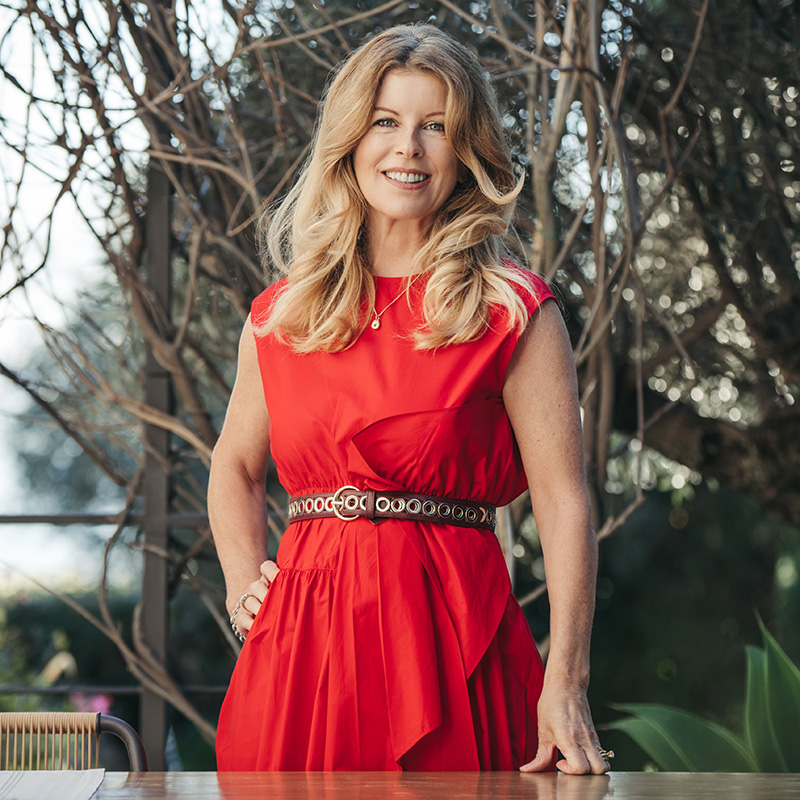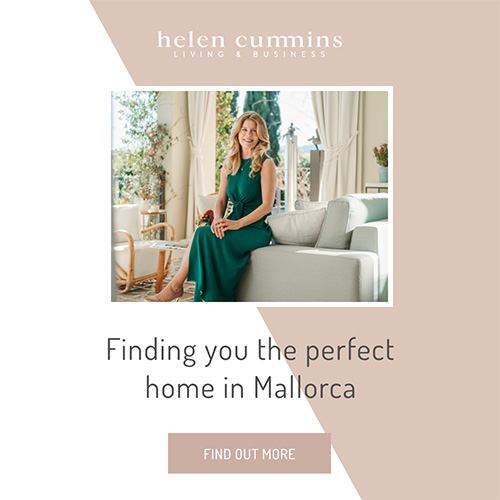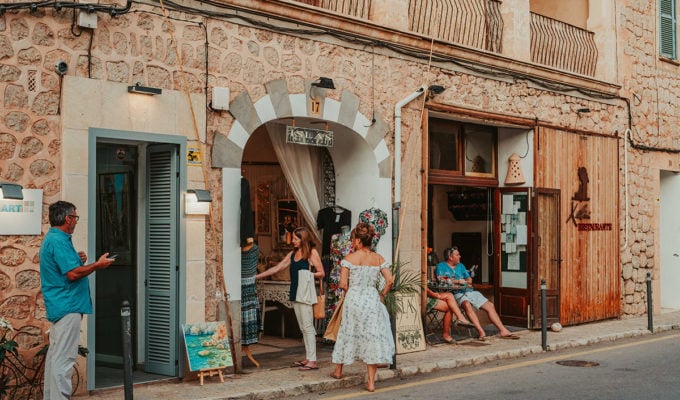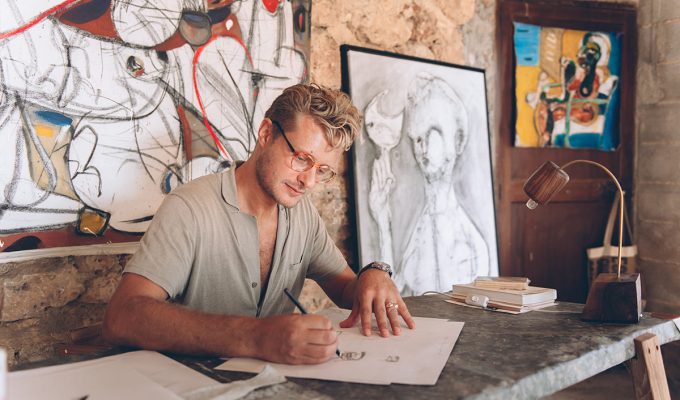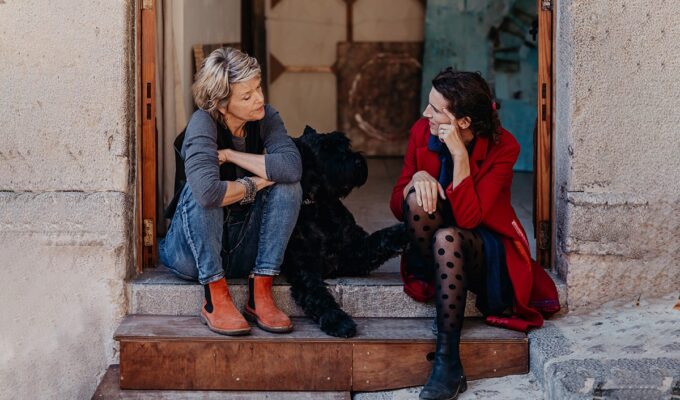In this episode, Helen sits down with world‑renowned artist Max Patté to talk about his family’s bold move from New Zealand to Mallorca. Max shares his journey of finding a home in Alaró (bought via WhatsApp!), settling his kids into Montessori school, navigating Spanish bureaucracy, and creating his stunning infinity works from his studio on the island.
We dive into his artistic evolution, his love for Mallorca’s Tramuntana mountains, and his exciting plans for a new creative space where he dreams of painting among 900‑year‑old olive trees.
From working on films like Harry Potter and The Hobbit to building a slower, more balanced life in the Tramuntana, Max’s story is a candid look at the rewards and challenges of starting over in Mallorca.
When & Where Can I Listen?
The Mallorca Living Podcast launched on April 9, and new episodes will be published bi-weekly.
You can listen and watch on:
▶️ YouTube
▶️ Spotify
🎧 Apple Podcasts
🎧 Amazon Music
Join the Conversation
This podcast is for you—and we’d love for you to be part of it.
📬 Got feedback?
💬 Want to suggest someone for us to interview?
💡 Have a topic you’d love us to explore?
Transcript
Intro – Meet Max Patté, Artist and Filmmaker
Hello, my name is Helen Cumins from My Yorkca Living, a video podcast dedicated to those who want to make My Yorkca their home. Today I’m very excited to talk to Max Patté. Max is originally from the UK. He spent 17 years living in New Zealand. He is a world-renowned artist collected by many wealthy individuals all around the world. Max and his wife moved to Mallorca in June 2022. He’s going to tell us about establishing his life here, getting his two young kids settled into Montessori school, finding and buying a home on the internet without seeing the house or village, and also overcoming the challenges of buying a home and establishing a business on the island.
Connecting to Mallorca – Amy’s First Contact & Gallery Red
Max will share the good, the bad, and the ugly. It’s great information for anyone planning to make Mallorca their home in the future.
Max: You’re very welcome.
Helen: Thank you so much. Sorry Amy couldn’t be with us.
Max: Oh, she had a summer school play. Some things take priority.
Helen: Exactly. So I actually first connected with Amy, your Irish wife. She got in contact with me around 2020 or 2021 while looking for connections to the art scene as you were planning your move from New Zealand to Mallorca.
Max: That was the biggest thing for me, and especially for Amy, to try and make those connections. I had a long-standing studio and art practice in New Zealand, so transferring that to Mallorca was a major concern. Amy was doing her due diligence on the art scene here, which is why she contacted you. She wanted a connection to Gallery Red.
Helen: I actually discovered it on my own while reading through your page and saw the hyperlink to the article with Drew Aaron, owner and director of Gallery Red. I clicked on it, and we ended up connecting.
Signing with Gallery Red – A Pivotal Moment
Max: After reading the interview, I emailed Drew, and 24 hours later we had a Zoom call. Very quickly, representation happened. I ended up signing an exclusive contract with Gallery Red for Spain, which has been invaluable for showing my work and establishing my practice here.
Helen: That was the final cherry on the cake, right?
Max: Exactly.
From Art School to Warner Bros – Falling into the Film World
Helen: Where did your passion for art come from?
Max: My mother was very creative and taught art. She still draws and paints every day. My dad was also creative in his own way. I spent weekends in our garage building things and taking engines apart. I went to art school in London, Wimbledon, not really knowing where it would take me. I imagined being a painter but ended up, by chance, in the film industry. I worked for Warner Brothers for 10 years, mostly in the UK and around the world.
10 Years in London’s Film Industry – Batman, Harry Potter & More
Max: It wasn’t my dream initially. I grew up in the countryside and rarely went to the cinema. But in London, surrounded by people aiming for creative industries, I just followed suit.
Helen: During art school, were you doing more conventional painting?
Max: Initially, yes. Wimbledon had a great reputation for traditional sculpture, figurative work, stone carving, and bronze founding. But the tutors were largely absent, so I switched to a technical arts course focusing on anatomy and photorealistic sculpting, which helped later in the film industry.
Helen: How was the experience working in film?
Max: Incredible. Early on, we translated designs from the art department into sculptural forms, costumes, or creatures. The best part was the people. London had a fantastic sense of humor and camaraderie. It didn’t feel like work; it was passion-driven.
Why Max Left the UK for New Zealand
Helen: Why did you move to New Zealand?
Max: I needed to get out of London. I had spent 10 years in the film industry with long commutes and long days. I wanted a change, to live somewhere I could work, have a bank account, and actually live. New Zealand, with Peter Jackson’s film industry, offered that. It was also easier to make connections because people I knew in London had experience there.
Meeting Amy – Love Story and Creative Partnership
Max: Amy needed to leave Ireland due to visa issues. She lived briefly in Boston and Bondi before moving to New Zealand, where we eventually met. Together, we’ve built our life. She handles administration and business logistics, giving me focus while also being an amazing creative partner.
Why Mallorca? From Ibiza Dreams to Mallorca
Helen: What made you move to Mallorca?
Max: Mallorca had always been a dream. I felt at home in the Mediterranean from an early age. We briefly looked at Ibiza but ultimately everything aligned for Mallorca. It’s attractive for families and artists alike.
Buying a House via WhatsApp – Taking the Leap
Max: We literally bought a house in Alaró via WhatsApp without visiting. After leaving New Zealand, we first went to the UK, then returned to Alaró to set things up before bringing the kids. Walking up the main road, we instantly felt at home.
Settling in Alaró – Family Life and Integration
Max: Alaró is known as an artist hub but also a welcoming village with a strong sense of community. There are galleries, art events like the Alaró Art Festival, and a great mix of locals and internationals. The community is safe for kids, and people are very friendly.
Montessori School – Education Choices for Their Kids
Max: Education was a key factor. We chose Montessori because it was English-based, had a British curriculum, and was convenient for commuting from home. Winnie, our youngest, had previous Montessori experience, which helped. Bo joined later due to school capacity. The school provides a strong, happy, and supportive environment for the kids while we integrate into the local community.
Art Practice Now – New Studio, Creative Focus, Commissions
For me, Mayorca Living is a video podcast dedicated to those dreaming of making a life for themselves here on Mayorca. This is a very personal project where I get to share wonderful stories about people who have actually made the transition to Mayorca.
I’d love to ask you to subscribe to this channel because it helps the channel grow and ensures we continue to reach as many people as possible who are interested in making Mayorca their home. Thank you for subscribing, liking, and sharing your comments. We love to hear your thoughts and feedback.
I want to talk about the business side because, as an artist, there’s always pressure. You’re providing for your family and growing your reputation.
Since moving to Mayorca, how has that been for you?
It’s pretty much what I expected. Finding a studio has been really difficult, with lots of pitfalls.
Was it just finding the right location or the right facility?
I looked everywhere, but there’s very little available that fits my needs. I needed a big studio space—my New Zealand studio was about 500 square meters with three-phase power and all my machinery.
When we used a property finder before moving, we heard Mayorca had a history of shoe-making and empty shoe warehouses. It sounded perfect, but we couldn’t find any that worked—they were hard to access or multi-story buildings. My criteria is specific, and 500 square meters is a lot of space.
Now I have two spaces: one in Santa Maria for storage and clean work, and one in the Polígon industrial area. I’d vowed never to work in industrial estates again—they’re soulless—but they’re practical. You can get forklifts, there are cafes, bars, restaurants, even a small supermarket nearby.
You’re creating large pieces, but now it’s mostly just you?
Yes, much more limited than in New Zealand where I had assistants. My practice has definitely changed. I’m more selective about what I do. I still make my infinity works entirely myself, whereas in New Zealand, I had assistants helping with assembly and paint filling. Now, I do everything, including carpentry and packing.
I also manage more online projects, offshore commissions, foundries, and fabricators. This frees me up to focus on things I can do by myself in the evenings. I’ve even returned to painting after 15 years because of these constraints, and I’m enjoying it.
Do you choose projects based on mood or practical considerations?
Both. It depends on the season and the heat in the studios. The dark studio is perfect for assembling light works. Commissions also influence what I work on.
Global Collectors, Exhibitions, and Gallery Red Support
You have some notable patrons and collectors, right?
Yes, many connections came through the film industry. For example, Ian McKellen bought pieces after visiting my studio in New Zealand. Later, he offered his warehouse in London for an exhibition in 2016. That was incredible exposure.
My first solo exhibition in New Zealand was backed by Westpac Bank, which allowed access to top-tier clients. It was a great way to start building a collector network.
How has it been in Mayorca for European market presence?
Interestingly, sales quadrupled during the pandemic. People were buying art instead of experiences like holidays or cruises. Initially, most sales were in New Zealand, but I also had commissions in Australia. Sydney was tough due to lockdowns, but sales rebounded later. London gallery sales are doing well too.
Exhibitions?
I had a big solo show in London and another with Gallery Red in Mayorca during their Night of Art. The Mayorca art market is vibrant, with a strong support network. Many service providers I need for art are shared with the yachting industry, making logistics easier than expected.
Spanish Bureaucracy – Business Setup & Cultural Contrast
Is the language a barrier?
Not really, more of a hurdle. Confidence and vocabulary grow over time.
What about bureaucracy?
Spanish bureaucracy is famously challenging. The first year involved constant trips to councils, banks, lawyers, and tax offices, often paying in cash. Processes that take a week elsewhere can take months here. You have to get into the rhythm of how things work; otherwise, it drives you crazy.
Do you find that frustrating?
Yes, but you learn to accept it. Some things are beyond your control or logic, so you go with it. People from more structured cultures, like Germans, often struggle at first. Compared to New Zealand, where things were incredibly easy, Mayorca can feel full of roadblocks. Tax returns are difficult, so a good lawyer and tax advisor are essential.
Land in Orient – Building a Home and Future Studio
Have you purchased land for a future project?
Yes, in Orient. I saw a picture of ancient olive trees online and was captivated. It’s a tiny village with less than 40 inhabitants. The land is magical, with 900-year-old olive trees.
Plans are in place to build a house and my future studio. We hope to have permission within 12–18 months. The primary residence and studio will be there, so I can work directly on the land.
Quickfire Questions
Preference: Mountain
Sunrise or Sunset: Sunrise
Summer heat or Winter calm: Winter calm
Siesta or Fiesta: Fiesta (Amy would agree)
Pamboli or Ensamada: Ensamada
North coast or South coast: North coast
